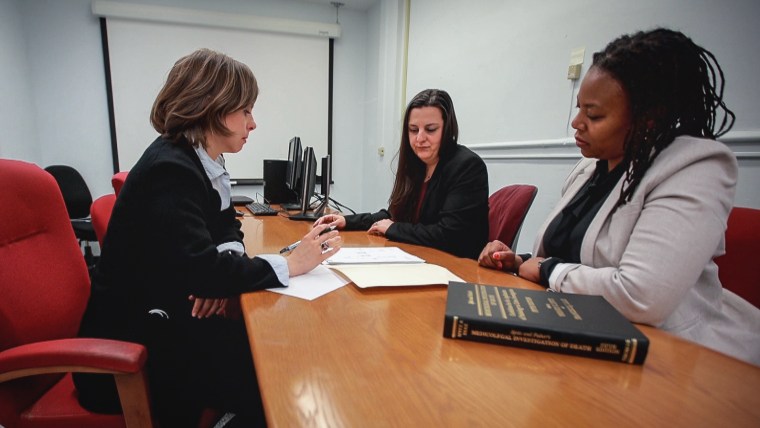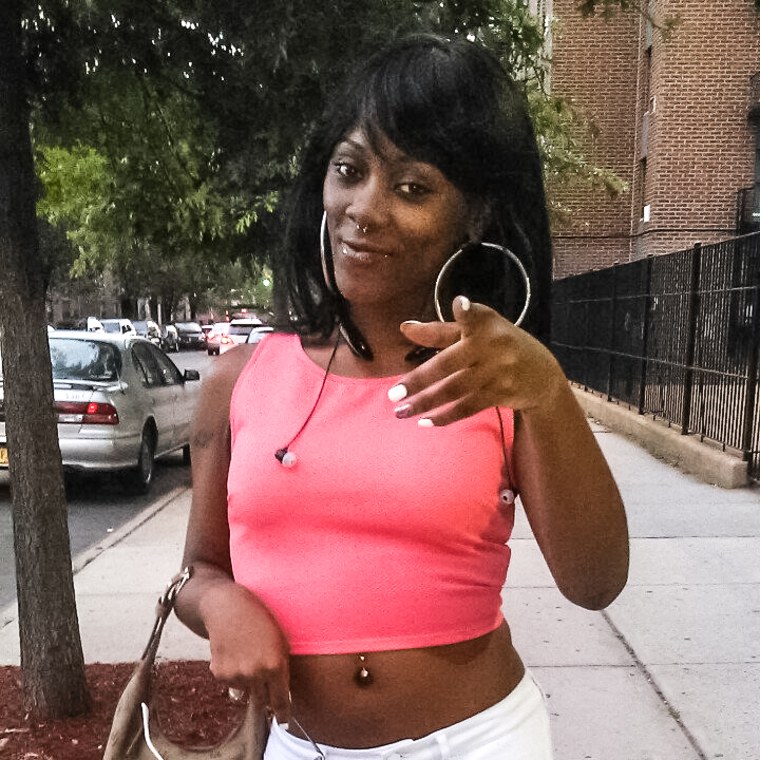A young man wearing a T-shirt with a raven design and a backpack holding a “Watchmen” graphic novel and art supplies was found dead behind a residential building in Brooklyn, New York, over six years ago. Forensic officials estimated that he was 18 to 30 years old.
Medical examiners say they still don't know who he is.
“We don’t know very much about him, but I know he was reading that comic,” said Aden Naka, deputy director of forensic investigations. “I think about him all the time.”
Cases like this motivate Naka and the two other women on the cold case squad in New York City's chief medical examiner's office: Shivonne Hutson, executive director of forensic investigations, and Dr. Angela Soler, assistant director of forensic anthropology.
Most of the cases they investigate involve people whose identities are known. But when they have time, they turn to the mysteries.
“We realized we really need to have one focal group here, where we can work on these cases collaboratively, in addition to the day-to-day, the new cases that were coming in,” Hutson said.
The young man found in Brooklyn is one of nearly 1,250 unidentified persons cases the team manages. More than 80 percent go back decades, many to the 1990s.
The National Crime Information Center estimates that 600,000 people go missing every year, Soler said, adding that most of them are found.
But it also estimates that 4,400 unidentified remains are recovered every year. Typically, a majority are identified within a year, but on average about 1,000 are not identified within the one-year mark.
"So all of those numbers build,” Soler said.

Sometimes there simply is not enough information available, even from the body itself, to generate a lead for an identification, Naka said. Detective instincts along with scientific and technological advancements have allowed the team to use improved algorithms within their fingerprint databases and to examine stable isotopes in remains, to investigate the chemical signatures of bones, teeth and hair.
A woman whose body was found in Brooklyn in 2011 told a story with just her teeth and denture.
“What was interesting about the denture is that it had what we call an open-faced crown, which is essentially a yellow-gold color on one of her teeth for decoration, and this is quite typical in Central American and Mexican communities," Soler said. "So, that also aligned with the neighborhood where she was located.”
Isotopes in her teeth revealed she frequently traveled from the coast to the mountains as a child.
“We are able to predict that she’s potentially from Honduras,” Soler said.
“Everything that you ingest, the water you drink, the food that you eat, leaves a chemical signature in your skeleton," she said. "In your teeth, it reflects your childhood. And your bones, it’s reflecting the past several years of life, and in your hair is reflecting the past several months."
In the past two years, the team has solved 20 cold cases. Chief Medical Examiner Dr. Jason Graham said much of his office's expertise in forensic identification can be attributed to its experience with mass fatality incidents, including the 9/11 attacks and the pandemic.
“That experience and the resources that came about through those experiences really enabled us to do something very specialized like this,” Graham said.
When all other leads have been exhausted and all the investigators have is a skull, they will reconstruct an individual’s face through a 3D printer and work with forensic artists to build a clay mold.
“Nothing replaces seeing that person’s face, and so it’s been a really useful tool,” Hutson said.
Graham's department encourages the public and family members with missing loved ones to look through cases in the National Missing and Unidentified Persons System, a national public database that tracks missing and unidentified people and is regularly used by forensic scientists and law enforcement agencies.
Sometimes family members will recognize loved ones on the database through the description of what they were wearing or other information that sparks recognition.
As painful as it may be, the investigators also suggest that families reach out to them.
“Families are a lot of times the very, very best source of information you’re ever going to get about somebody," Naka said. "And we don’t tend to get too tangled up in formalities and whether this or that report has been filed. We want to hear from people that are missing somebody.”
The anguish of family members is always in the back of their minds, they said. Like that of Victoria Boomer-Harris, whose youngest daughter, Aliyah Boomer, went missing in August 2015 in Brooklyn.

Boomer's family members said that after they didn’t hear from her for two days, and she failed to show up to her sister’s birthday party, they filed a missing person’s report with the NYPD. To this day, they said, they have no clue what happened to her.
“You know, in my wildest mind, you watch your child grow up and playing and go to school and do things, you never know that it’s going to touch your home,” Harris-Boomer said.
The investigation remains ongoing, said Sgt. Edward Riley, an NYPD spokesperson.
Boomer-Harris said Aliyah had an outgoing personality and loved to write poems. She also said she believes her daughter’s case is not getting enough attention.
“I’m going to speak for every African American, Black parent that has a child that’s missing," she said. "Their cases are not getting any attention because of who we are, our skin color, nationality.”
She said she is hopeful her daughter is still alive but wants closure on what happened.
“I got to be strong," Harris-Boomer said. "So, whatever the outcome is, I got to accept it. Because if she’s, if she’s gone, I can’t bring her back. So, I got to accept that.”
